Leni Riefenstahl: The Best Director You’ve Never Heard Of
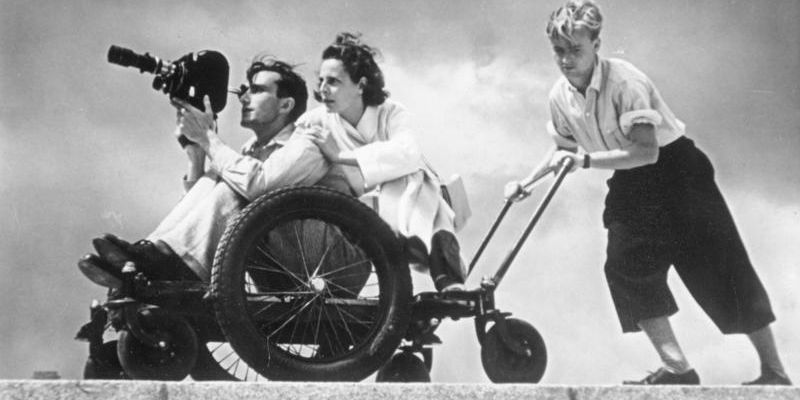
Jax is a filmmaker and producer, and a film &…
Some of you may have come across Helene “Leni” Riefenstahl, so I hope you’ll forgive the introduction for those who haven’t. Born in 1902 in Berlin, Germany, Riefenstahl defied gender norms and became one of the most successful documentary filmmakers of the 1930s. At a time when most industries, especially film, were dominated by men, Riefenstahl found herself not only directing films but developing new techniques which influenced cinema up to this very day. Riefenstahl died in 2003, relatively unnoticed.
So why has history apparently forgotten this talented filmmaker? Well, I left out a small detail. Leni Riefenstahl was a Hitler-loving Nazi sympathiser. In fact, her best known film, Triumph of the Will, documents the 1934 Nazi rally in Nuremberg. Ever see video footage of Adolf Hitler addressing apparently adoring crowds? The likelihood is Riefenstahl was the responsible filmmaker. She’s literally the only person you can accurately call a “feminazi”. Let’s take a look at her career and life with the Nazi party.
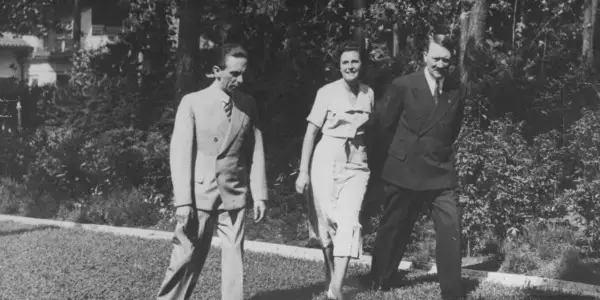
Leni and Adolf
To her death, Riefenstahl maintained that her affiliation with the Nazi party was purely an artistic endeavour. We’ll leave the ridiculousness of that notion aside for the time. How she became such a crucial member of the biggest propaganda machine prior to Soviet Russia remains our concern for the moment. Essentially, Hitler was a fan. He saw Riefenstahl’s debut film The Blue Light and was apparently blown away.
For her part, Riefenstahl was known for her sexual exploits and celebrity hunting. One imagines when Hitler, rising star, came a’calling, Riefenstahl was well up for it. She began work on Victory of the Faith, once considered a lost film. Hitler had every copy he could find destroyed because at the time of filming he was on good terms with Ernst Röhm, before Hitler had him murdered. Luckily, or unfortunately as the case may be, Hitler placed no blame on young Leni and was otherwise thrilled with her work.
Following the success of Victory of the Faith, Riefenstahl was hired to film the Nuremberg rally of 1934. Triumph of the Will, as it became known, is a feat of propaganda cinematography, with Riefenstahl painstakingly picking and choosing precise angles which would not only show Hitler as a man of power, but one of influence and popularity. Hitler was very pleased. Happy Hitler.
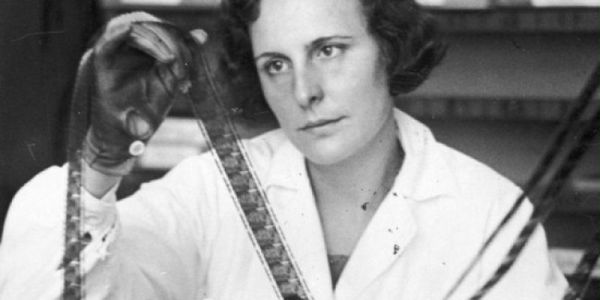
Riefenstahl continued working closely with and filming Hitler, and his posse of evil, including Joseph Goebbels and Rudolf Hess, notably documenting the 1936 Olympics. Rumours can be found in the depths of the internet about a possible affair between Hitler and Riefenstahl, but this idea seems to be largely refuted by those closest to them. Apparently, Hitler just wasn’t interested, despite Riefenstahl’s best efforts.
Technical Prowess
Setting aside her Nazi fondness for just a moment, let’s consider Riefenstahl from a purely aesthetic perspective. In this regard, she wasn’t just talented, she was a wunderkind. Aside from anything negative, what is the one main attribute historians agree Hitler possessed? Charisma. Now, a power-hungry megalomaniac doesn’t come across as a charismatic, beloved leader by accident. This was a carefully planned and expertly executed propaganda machine that created the persona of Adolf Hilter, one that a post-war Germany not just embraced, but craved given their economic state after the resolutions of World War I.
Joseph Goebbels was the mastermind behind this, but he wasn’t a filmmaker and he knew it, so he delegated. Riefenstahl wasn’t merely a pawn, she directed and produced these films and had a lot of creative control. She used that creative control in a variety of novel and effective ways. The most memorable, because it’s some of the most famous footage, is that which shows an excitable Hitler addressing a cheering and adoring crowd from Triumph of the Will.
https://www.youtube.com/watch?v=d0OtwfYahyg
Riefenstahl shoots Hitler from a low angle, placing him in a position of power over the common man. She cuts to the cheering crowd without context. Are they cheering the words he’s speaking at those moments? It’s impossible to actually know, but through tricky and careful editing the average viewer will accept this as an unbroken sequence of events. We generally look down on the crowds, often from extremely high angles. They are ants on the screen. Whereas the man himself is a mighty figure in the frame, dominating it entirely.
These techniques and others, such as Hitler’s introductory descent from the clouds (giving him a godlike status) presented Hitler not only to Germany but to the world as a charismatic, fully supported, and powerful leader. Don’t forget that Triumph of the Will wasn’t just embraced by German audiences – it won the gold medal at the 1935 Venice Film Festival and the Grand Prix at the 1937 World Exhibition in Paris. While the film was not always received positively – Frank Capra called it a “psychological weapon” – she celebrated immediate international fame because of it.
If you look for it, you will find these techniques dotted around mainstream film. A character shot from below is subtly given a position of power of the other characters. For instance, in The Maltese Falcon, John Huston shoots the Fat Man from a very low angle, allowing his body to dominate the frame in a scene in which he maintains total control over Humphrey Bogart by drugging him. Coming out a mere six years after Triumph of the Will, it certainly raises an eyebrow.
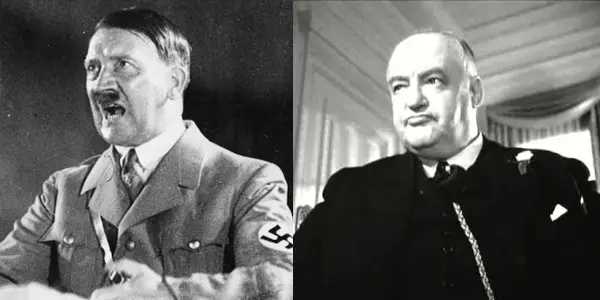
The Maltese Falcon (1941) – source: Warner Bros.
What about a more recent example? With the release of Star Wars: Episode VII – The Force Awakens a lot of attention was given to the very obvious similarities between the Third Reich and the First Order. It was a very clear reference to the Nazi party, but what, specifically, was the film referencing? The iconic images of Hitler addressing the crowds – images we got from Triumph of the Will.
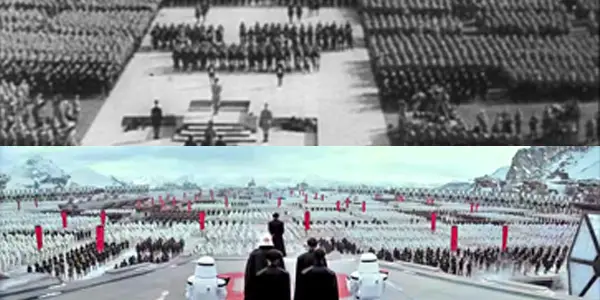
Star Wars: Episode VII – The Force Awakens (2015) – source: Lucasfilm
The above images are near mirrors. The leader stands alone, slightly above even his most valued high ranking officials, who stand just behind him. At all sides, his followers stand at attention, heeding the words carefully.
Riefenstahl’s Triumph of the Will, while generally ignored in film history due to its controversial subject, has been incredibly influential in film technique.
Later Life
Though detained by the Allies for several years after the fall of Germany, Riefenstahl was released and escaped any persecution for her part in the events that unfolded during Hitler’s rise to and seat of power. In fact, she remained relatively embraced, particularly in Europe, to her death in 2003, even continuing to make films. She stated her greatest regret was meeting Hitler:
“It was the biggest catastrophe of my life. Until the day I die people will keep saying, ‘Leni is a Nazi’, and I’ll keep saying, ‘But what did she do?’”
With no convictions and evidence other than her promotional films, this writer imagines Riefenstahl’s true political sympathies will forever be debated. Personally, I find it difficult to accept that she had no knowledge beyond making her films.
Conclusion: The Wagner Paradox and Cognitive Dissonance
So now we are faced with two undeniable truths about Leni Riefenstahl. She was a talented and influential filmmaker. She promoted the Nazi party, contributing (even if she claimed she didn’t know) to the rise and power of one of the most, for lack of a better word, evil administrations in history. She practically invented propaganda filmmaking. It just happened to be horrible, horrific, genocidal propaganda. How do we reconcile those two things?
Well, you may not have to. Renowned composer Richard Wagner remains, particularly in America, an embraced and admired composer for his incredible musical ability and striking compositions. It’s also generally known that not only was Wagner himself anti-Semitic, but Ride of the Valkyries functioned as the Nazi party’s sort of unofficial theme song. Stephen Fry delves into this apparent paradox in his documentary Wagner & Me.
It comes down to a psychological phenomenon made possible by the complexity of the human mind – that is our ability to hold two opposing beliefs simultaneously. This leads to cognitive dissonance – the mental stress humans come under as a result of not being able to come to a satisfactory resolution of our own opinions.
I propose we apply the same principle to Riefenstahl. I don’t think she should go unremembered, because she was hugely influential from a filmmaking and even feminist perspective. But I think in that memory, we must always maintain context of what that influence was used for. History forgotten is history repeated.
Is it correct that Leni Riefenstahl remain largely ignored, when her contributions to filmmaking were so important? Or should we accept the cognitive dissonance of her filmmaking abilities and political agendas?
Does content like this matter to you?
Become a Member and support film journalism. Unlock access to all of Film Inquiry`s great articles. Join a community of like-minded readers who are passionate about cinema - get access to our private members Network, give back to independent filmmakers, and more.
Jax is a filmmaker and producer, and a film & tv production lecturer at the University of Bradford and is also completing a PhD about Stan Brakhage at the University of East Anglia. In the remaining "spare time", Jax organises the Drunken Film Fest, binges bad TV, and dreams of getting “Bake Off good” with their baking.













